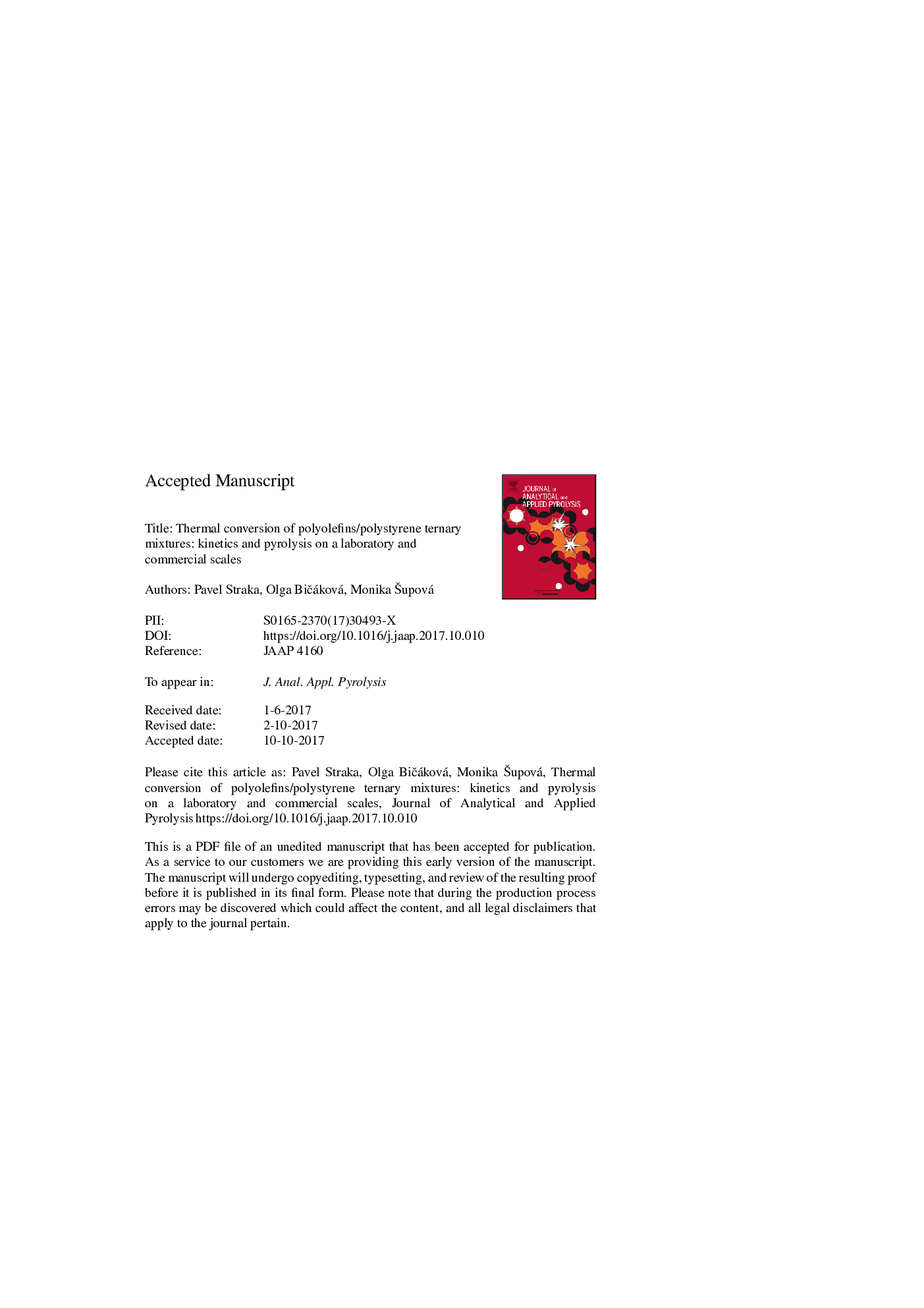| Article ID | Journal | Published Year | Pages | File Type |
|---|---|---|---|---|
| 7606489 | Journal of Analytical and Applied Pyrolysis | 2017 | 33 Pages |
Abstract
The thermal treatment of the three-component mixtures of polyethylene, polypropylene and polystyrene has been investigated. Thermal reactions have been described and the kinetics of thermal decomposition using the FriedmaÅs differential isoconversional method have been evaluated; slow pyrolysis on a laboratory scale and the pyrolysis of a contaminated waste mixture on a commercial scale have been carried out. The obtained results show that polystyrene radicals promote the decomposition of polyolefins, as a result of which the thermal decomposition of polyethylene and polypropylene proceeds faster and the yields of the gas and oil obtained during pyrolysis are quite high: 4-6Â wt.% of gas and 88-90Â wt.% of oil in the case of laboratory-scale pyrolysis and 15Â wt.% of gas and losses and 80Â wt.% of oil in the case of commercial-scale pyrolysis. TG-FTIR and TG-MS analyses have proved that the composition of volatile pyrolysis products varies. In the case of the ternary mixture with prevailing polyethylene (and polypropylene and polystyrene being in minority), the volatiles contained mainly aliphatic hydrocarbons and substituted benzenes; in the case of the ternary mixture with prevailing polypropylene, a significantly higher amount of substituted alicyclic compounds was found. This was confirmed by the GC-MS analysis of the oils obtained. Considering the quite high HHV and LHV of oils (46-48Â MJ/kg and 43-45Â MJ/kg, resp., in the case of laboratory-scale pyrolysis and 43 and 41Â MJ/kg, resp., in the case of commercial-scale pyrolysis) as well as the very low content of sulfur and nitrogen, the oils can be used as a clean liquid fuel; because of their composition, they can also serve as a source of chemicals and solvents.
Related Topics
Physical Sciences and Engineering
Chemistry
Analytical Chemistry
Authors
Pavel Straka, Olga BiÄáková, Monika Å upová,
